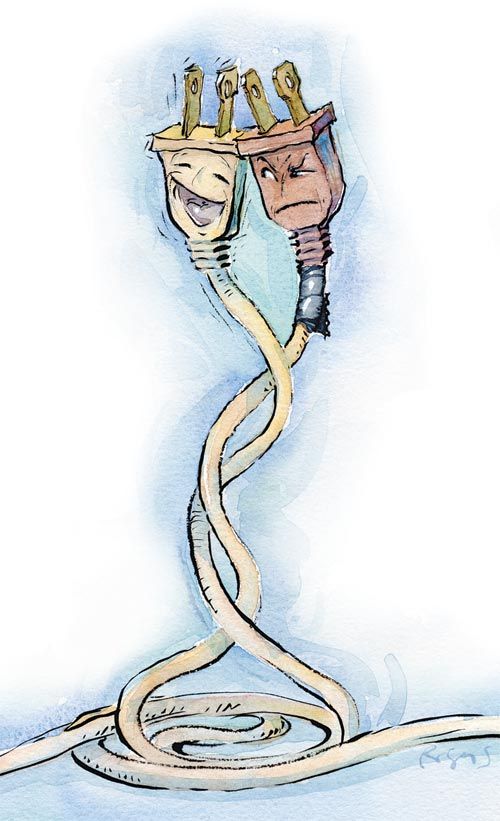Troubleshooting
Great moments in building history: There's a fundamental truth of electricity you should never forget

My wife and I own a home on Martha’s Vineyard that we rent to vacationers and, of course, sometimes use ourselves. After the entire Northeast went into a prolonged winter deep freeze a couple of years ago, a pipe burst, and our house flooded. (My niece, who was in the house on Valentine’s Day weekend, called to say that it was raining inside the house—but not outside.) Consequently, we ended up having to replace the rugs in the house. The next year, we decided that we should shampoo the rugs for the start of the new season.
I bought a nice steam vac on the mainland and took it to the Vineyard via car, then shuttle bus, then ferry, then cab, to the house. The next morning, my wife said that if I got the kids out of the house by taking them to the beach, she would vacuum prior to shampooing the rugs. That sounded like a fair deal to me.
When I returned, my wife announced that she had finished vacuuming and had decided to start the shampooing. However, the new steam vac did not work. Dead. Nada. “Nonsense,” I thought. I looked over the situation.
My wife had just finished vacuuming the whole house and had everything set out in the living room. The new steam vac was filled with soap and water, and was plugged in and ready to go. I flipped the switch (my wife said, “I already did that”). Nothing: not a buzz, a hum, or a click; not one of the telltale diagnostic cues. I unplugged the cord from the outlet and plugged it into another outlet (my wife said, “I already tried three different outlets”). Flipped the switch. Nothing. I tried another outlet. Nothing.
Now I had a choice. I could take the steam vac back to the store on the mainland, or I could void the warranty and fix it myself. I am an engineer, and I have never met a dead machine that I could not bring back to life. It becomes a matter of pride. So I set about to fix the steam vac. I disassembled it as far as I could. However, this machine was new. That meant I couldn’t get to the electric motor, which was sealed in plastic. I managed to get to the connections at the on/off switch, and with a voltage tester, I tested for power between the contacts and the ground of a power outlet. Nothing. Double-checked to make sure the cord was plugged in; confirmed. Checked again for power. Nothing. Finally, I reached the unlikely but only conclusion: The plug must be bad.
I examined the plug on the end of the cord. Looked great. Of course, I couldn’t take it apart (all sealed), so I cut it off. Then I searched the basement for a new plug. (We all have spare new plugs in our basements, right?) Nothing. So I cut off a plug from an old VCR and spliced it onto the cord from my nice new steam vac.
As I went to plug it in, though, I discovered a confusing thing: It was already plugged in. But how could that be? I traced the cord from the outlet. It went to the vacuum cleaner, still sitting in the middle of the room. I then plugged in the steam vac for the first time—ever, I now realized. It worked perfectly.
That is when a fundamental truth of electricity dawned on me: “No matter how many outlets you plug the vacuum cleaner into, the steam vac will not turn on unless it also is plugged in.”
Drawing by: Jackie Rogers
Fine Homebuilding Recommended Products
Fine Homebuilding receives a commission for items purchased through links on this site, including Amazon Associates and other affiliate advertising programs.

Affordable IR Camera

Handy Heat Gun

Reliable Crimp Connectors






















